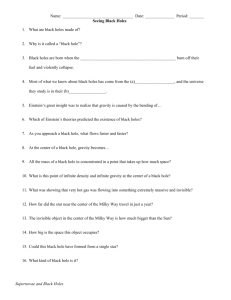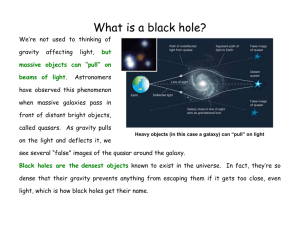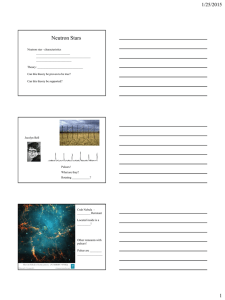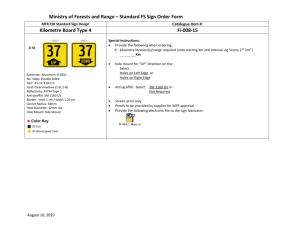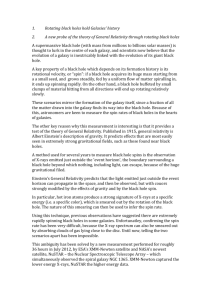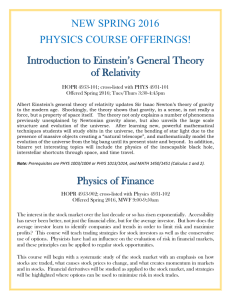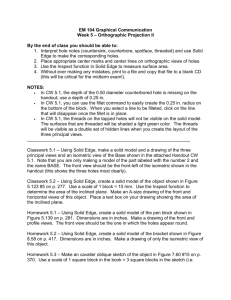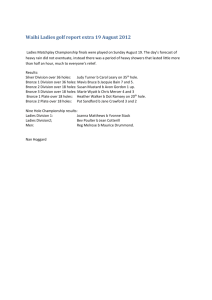DR. KIMBERLY WEAVER: In the past five years our knowledge of
advertisement
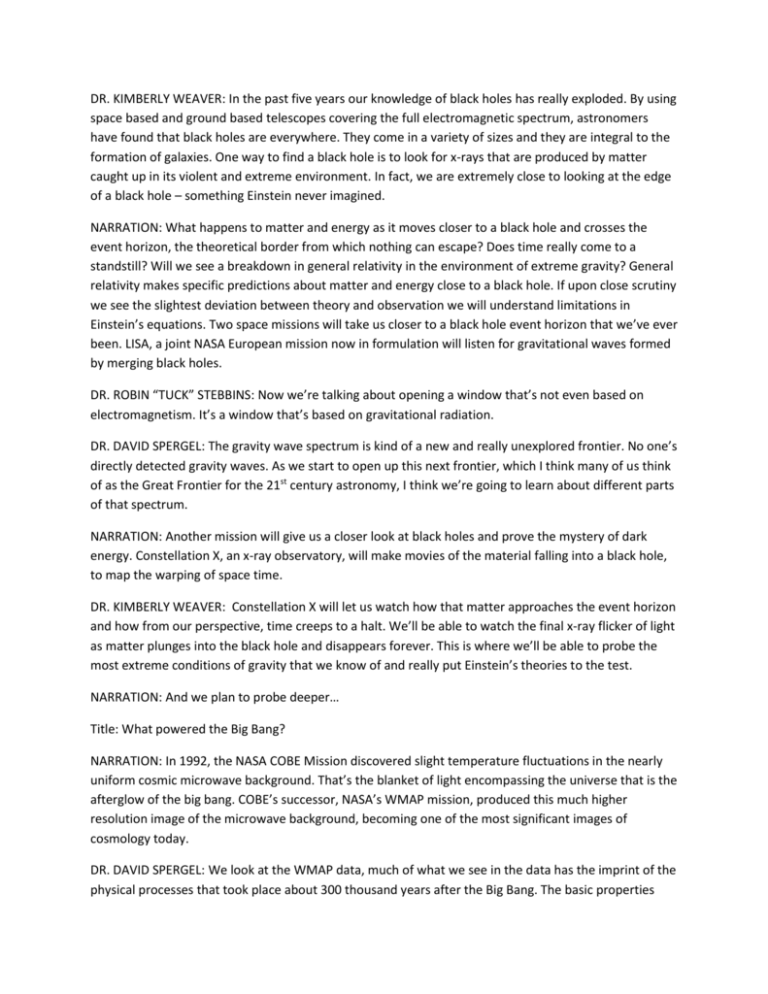
DR. KIMBERLY WEAVER: In the past five years our knowledge of black holes has really exploded. By using space based and ground based telescopes covering the full electromagnetic spectrum, astronomers have found that black holes are everywhere. They come in a variety of sizes and they are integral to the formation of galaxies. One way to find a black hole is to look for x-rays that are produced by matter caught up in its violent and extreme environment. In fact, we are extremely close to looking at the edge of a black hole – something Einstein never imagined. NARRATION: What happens to matter and energy as it moves closer to a black hole and crosses the event horizon, the theoretical border from which nothing can escape? Does time really come to a standstill? Will we see a breakdown in general relativity in the environment of extreme gravity? General relativity makes specific predictions about matter and energy close to a black hole. If upon close scrutiny we see the slightest deviation between theory and observation we will understand limitations in Einstein’s equations. Two space missions will take us closer to a black hole event horizon that we’ve ever been. LISA, a joint NASA European mission now in formulation will listen for gravitational waves formed by merging black holes. DR. ROBIN “TUCK” STEBBINS: Now we’re talking about opening a window that’s not even based on electromagnetism. It’s a window that’s based on gravitational radiation. DR. DAVID SPERGEL: The gravity wave spectrum is kind of a new and really unexplored frontier. No one’s directly detected gravity waves. As we start to open up this next frontier, which I think many of us think of as the Great Frontier for the 21st century astronomy, I think we’re going to learn about different parts of that spectrum. NARRATION: Another mission will give us a closer look at black holes and prove the mystery of dark energy. Constellation X, an x-ray observatory, will make movies of the material falling into a black hole, to map the warping of space time. DR. KIMBERLY WEAVER: Constellation X will let us watch how that matter approaches the event horizon and how from our perspective, time creeps to a halt. We’ll be able to watch the final x-ray flicker of light as matter plunges into the black hole and disappears forever. This is where we’ll be able to probe the most extreme conditions of gravity that we know of and really put Einstein’s theories to the test. NARRATION: And we plan to probe deeper… Title: What powered the Big Bang? NARRATION: In 1992, the NASA COBE Mission discovered slight temperature fluctuations in the nearly uniform cosmic microwave background. That’s the blanket of light encompassing the universe that is the afterglow of the big bang. COBE’s successor, NASA’s WMAP mission, produced this much higher resolution image of the microwave background, becoming one of the most significant images of cosmology today. DR. DAVID SPERGEL: We look at the WMAP data, much of what we see in the data has the imprint of the physical processes that took place about 300 thousand years after the Big Bang. The basic properties that we’ve inferred from this is that the geometry of the universe is flat or nearly flat. We also know it’s pretty old. Today we know it’s about 13.6, 13.7 billion years old. The stars formed about 100 million years after the Big Bang. Einstein hoped to fold the quantum force of electromagnetism into general relativity and to find a uniform theory. Much of what he could not answer and struggled with until the day he died remains unanswered today. These questions about dark energy, black holes, the big bang, and the nature of gravity have come to define the cutting edge.


